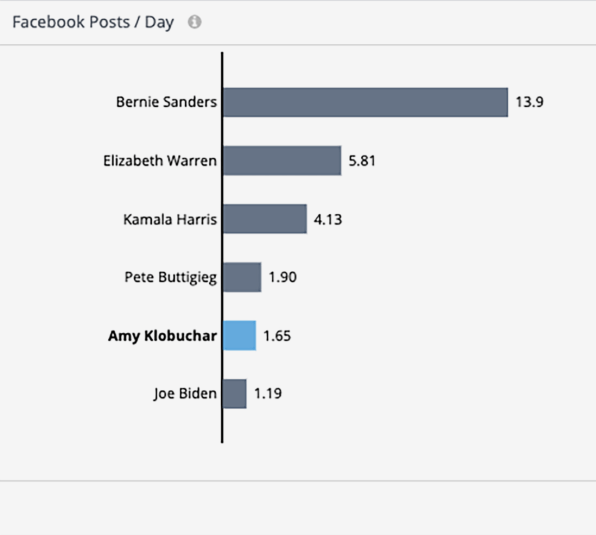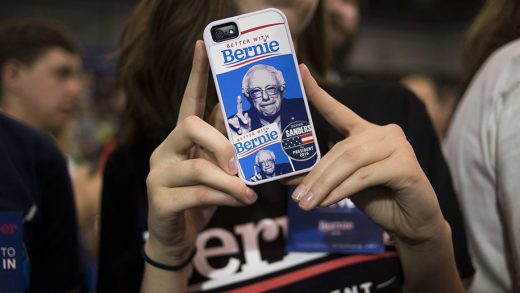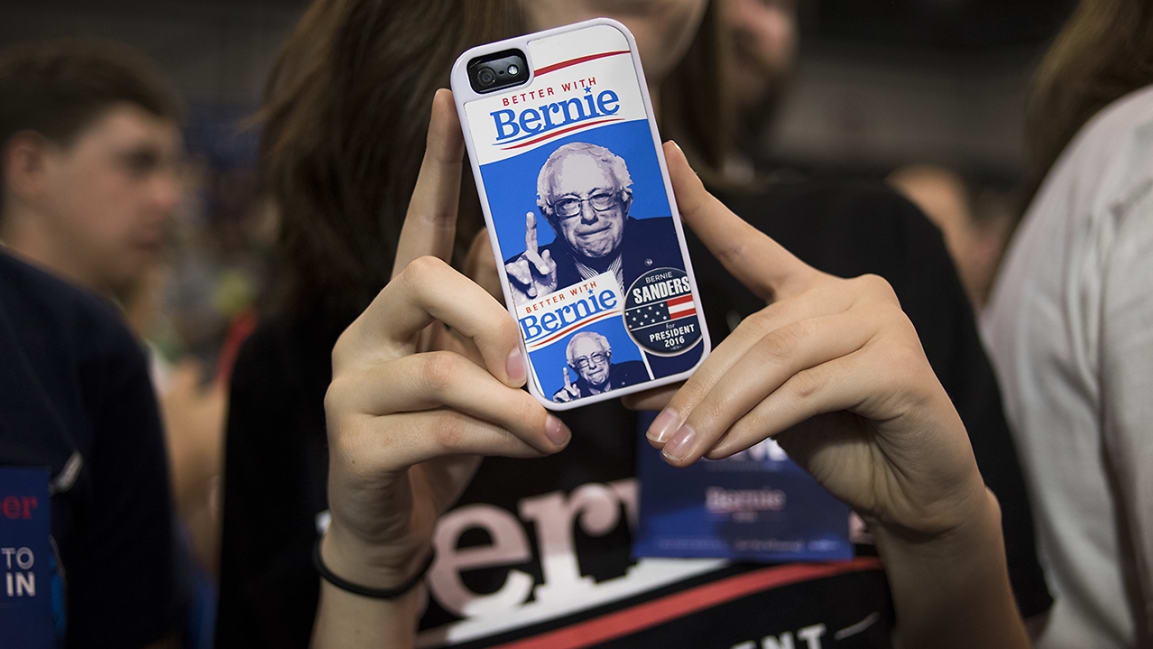This is how social media can predict the next Democratic presidential nominee
By Anthony Cospito
Unlike any election before it, 2016 was a wake-up call for the role of social media in politics. This time around, voters and candidates alike have their eyes wide open to the promise and the peril these platforms can bring. That said, which Democratic candidates among the myriad running for election in 2020 are the stars of social?
To find out, we at Moving Image & Content sorted the top six 2020 Democratic candidates for president by the unique donors and qualifications for debate, then ranked them by reach, growth, engagement, and activity online from April 25th to May 25th. Our results revealed the following contenders (in alphabetical order): former vice president Joe Biden, Pete Buttigieg (D-IN), Kamala Harris (D-CA), Amy Klobuchar (D-MN), Bernie Sanders (D-VT), and Elizabeth Warren (D-MA).
While their approaches to social vary, all share a hyper-focus on Facebook—and with good reason. Yes, teens have left the platform in droves and fake news can still be found there, but 74% of U.S. adults continue to use the social network daily, according to Pew Research, making it an ideal proxy political platform for the 2020 nomination.
Sanders is running a full-court press across Facebook. He’s currently leading in audience size with 5 million followers according to proprietary data by social analytics platform Rival IQ, and posting an average of 14 times a day on the platform. That’s three times more than any other candidate. But it’s not just the volume of posts that’s getting attention, it’s what he talks about that’s sparking a reaction. Surprisingly the loudest voice on the abortion ban isn’t Warren, Harris, or Klobuchar–it’s Sanders. His posts get more “angry” reactions than any other candidate (reactions that relate to the content of the post, not to Sanders himself) sparking waves of passionate conversation among family and friends. This is exactly what the Facebook algorithm favors and rewards.

Also coming in strong is “Uncle Joe” Biden with his recent entry into the race. If the love Facebook users are showing for Biden’s announcement is any indication of where the polls are headed, Sanders better prepare for battle. Biden’s campaign announcement post got 15,000 “love” reactions–more than any of the other top six candidates. How voters interact with content is measured by engagement, including reactions, comments, and shares. This is arguably the most important metric for brands and politicians alike. While views of a post can be purchased, engagement cannot.
Sanders leads in total engagement on Facebook at 3 million interactions, followed by Warren, Harris, Buttigieg, Biden, and Klobuchar. In terms of growth, however, the picture changes. When Biden entered the race, it fueled engagement growth of 2,890% compared to Warren (62%), Klobuchar (39%), and Sanders (12%). Looking at post comments, Biden leads growth at 1,700% compared to 32% from Elizabeth Warren and 8% from Sanders.
In post shares, we see a similar story. Biden is up 8,000%, compared to Warren at 29% and Sanders at 14%. Biden currently has a 9-point lead over Sanders in share-of-voice across Facebook, Instagram, Twitter, and YouTube according to proprietary data from social listening platform Synthesio. Biden’s lead also shows an upward trend of 2.4% compared to Sander’s shrinking share-of-voice from 48% to 25% after Biden entered the race. Though Biden is clearly benefitting from the momentum, his challenge will be maintaining this level of growth. Buttigieg shows the largest loss in share-of-voice among the six at -6.48, which is a clear wake-up call for the candidate to change things up.

Given the rising popularity of Instagram, candidates performing well here have a shot at winning over younger audiences. In terms of followers, Sanders leads at 3 million, followed by Harris at 1.7 million, Warren at 1.4 million, and Biden at 1.3 million. Sanders also leads in total engagement there, due in part to his strategic use of Instagram Stories content over the feed. This is a strategy both Warren and Harris share, helping them rank second and third in Instagram engagement respectively.
Although Twitter reaches fewer voters than Facebook or Instagram, Trump has raised its profile as a platform for all things politics. Sanders leads here in followers, while Warren tweets the most and shows the strongest engagement overall. Sanders’ focus on social issues continues on Twitter. His tweet, “Abortion is a constitutional right” received the most engagement, outpacing top tweets from Warren and Harris about Attorney General Barr’s handling of the Mueller report. Biden’s announcement tweet ranked fourth in engagement, receiving over 30k retweets.
Social performance metrics aside, how do the candidates fare in the friendliness factor? Examining positive and negative sentiment, Biden dominates both, indicating strong word of mouth and a healthy level of debate, followed closely by Warren and Sanders.
As constituents, we need to hold our elected officials (and those running to become elected officials) to their promises, challenge proposed policies, and use social media to press them publicly on the issues that matter most. This empowers us to strengthen our democracy and leverage social media to fuel public discourse, not destroy it.
Given the candidates’ current performance in these early days, a battle between Sanders and Biden appears to be brewing, with Warren keeping both on their toes.
While the race continues to narrow, having a better understanding of how the candidates use social media in their quest for the nomination enables us to confidently consider our vote, phone in hand, eyes wide open.
Anthony Cospito is the head of strategy at Moving Image & Content.
(14)



